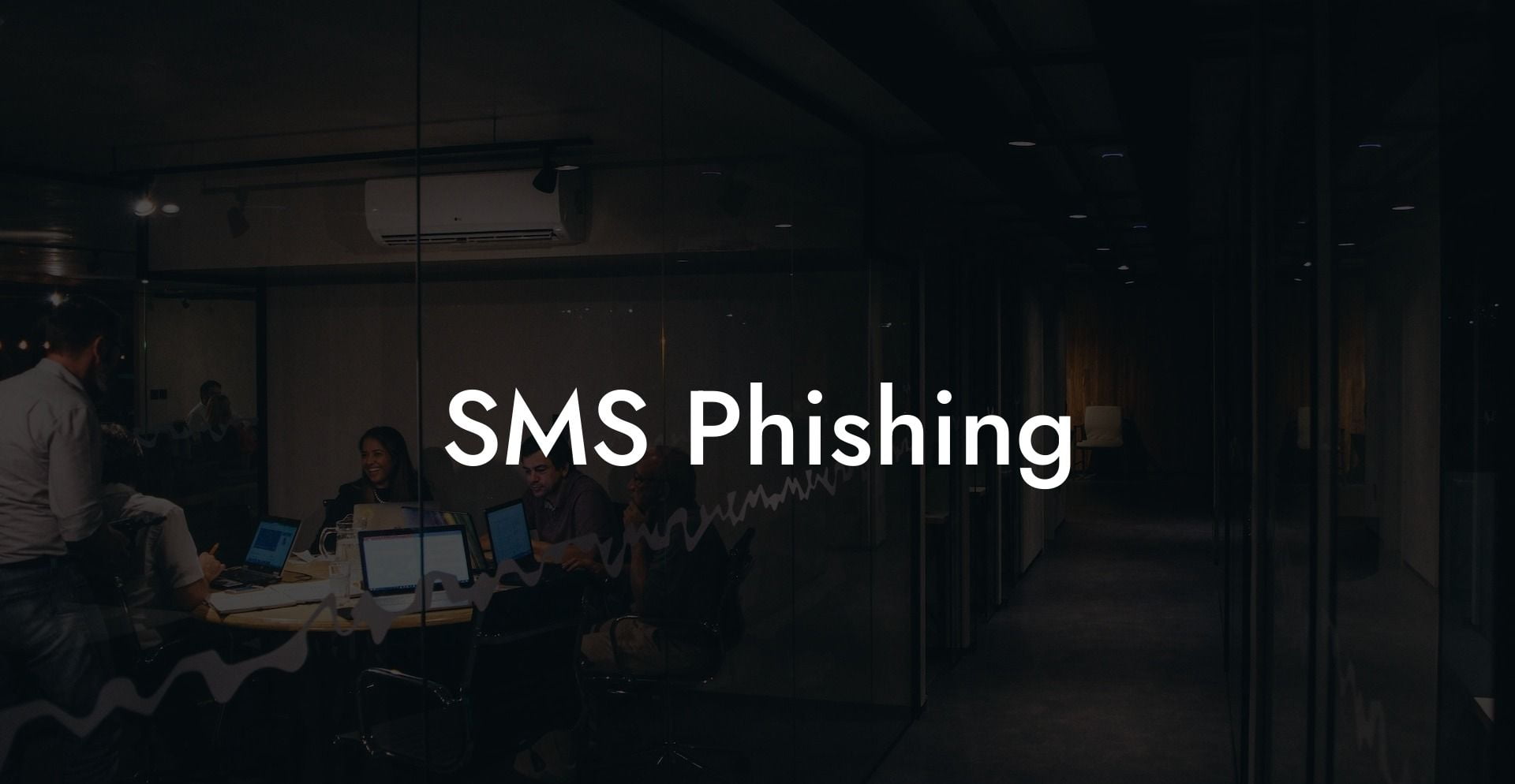Have you ever received a text message from an unknown number, presenting a lucrative offer or a mysterious link urging you to click on it, only to think twice and delete it? Congratulations, you have just dodged a bullet – a new age scam known as SMS phishing or 'Smishing.'
SMS Phishing Table of Contents
As technology evolves, cybercriminals are adapting to new environments and finding clever ways to attempt to steal your personal information. To protect yourself from such deceptive schemes, it is important to understand what SMS phishing is, recognize the common signs, and learn how to stay safe.
What is SMS Phishing?
Protect Your Data Today With a Secure Password Manager. Our Top Password Managers:
If you're familiar with email phishing, SMS phishing, or "Smishing," follows a similar approach but through text messages. These scams involve cybercriminals sending text messages that appear to be from a trusted source, such as a bank, government agency, or other reputable organizations.
The goal of these fraudulent messages is to manipulate you into revealing sensitive personal information or even financial details. Cybercriminals use a variety of tactics, such as creating a sense of urgency or invoking fear, to trick you into clicking on malicious links or responding with your confidential data.
Common SMS Phishing Tactics
Smishing attacks can be complex or straightforward, depending on the skill level and resources of the cybercriminal. However, they often follow a common pattern:
1. Sender disguises: Fraudsters may use spoofed numbers or identify themselves as legitimate companies, making it hard for recipients to distinguish between genuine and fake messages.
2. Urgency and fear: Messages usually invoke a sense of urgency or fear by suggesting that there's a problem that needs immediate attention (e.g., unauthorized bank transactions, unpaid taxes, etc.).
3. Enticing offers: Targets may receive messages with too-good-to-be-true deals, free gift cards, or discounts to lure them into clicking on malicious links or sharing personal information.
4. CTA through links or phone numbers: The core of smishing often lies in the call-to-action (CTA) element, urging you to click on a link, call a phone number, or reply to the text message.
Real-life Example of SMS Phishing
Imagine you receive a text message that appears to be from your bank:
"Dear valued customer, we suspect unusual activity on your account. Please verify your credentials by clicking here [malicious link] to avoid temporary suspension. Regards, BankName."
In a panicked state, you might click the link, leading you to a fake website mirroring your bank's login page. By entering your login details on this false site, you unknowingly hand over your login credentials to the cybercriminals, who now have access to your accounts.
Tips for Staying Safe from SMS Phishing
Although smishing attacks attempt to disguise themselves well, there are ways to safeguard yourself from the scammers:
1. Stay vigilant: Watch out for grammatical errors, blurred logos, or suspicious links. Remember that genuine organizations will not request personal information via text messages.
2. Don't click links or call numbers directly: Instead, verify the legitimacy of a message by looking up the organization's official contact information and using that to call or email.
3. Use security software: Ensure you have security software installed on your mobile devices to block malicious links or websites.
4. Don't respond to unknown senders: Avoid replying to suspicious text messages, as this often confirms your number as active, leading to more spam or scam texts.
5. Report smishing attempts: Notify your phone provider or forward the phishing text to 7726 (SPAM) to allow authorities to investigate.
SMS phishing is a growing and dangerous threat to your personal and financial safety. Stay vigilant by recognizing its common signs, never clicking on links or sharing personal data, and spreading awareness about such scams to your friends and family. Sharing this article with them is an excellent start, and don't forget to check out our other guides on Voice Phishing to protect yourself from all types of modern-day cyber threats.
Protect Your Data Today With a Secure Password Manager. Our Top Password Managers:















